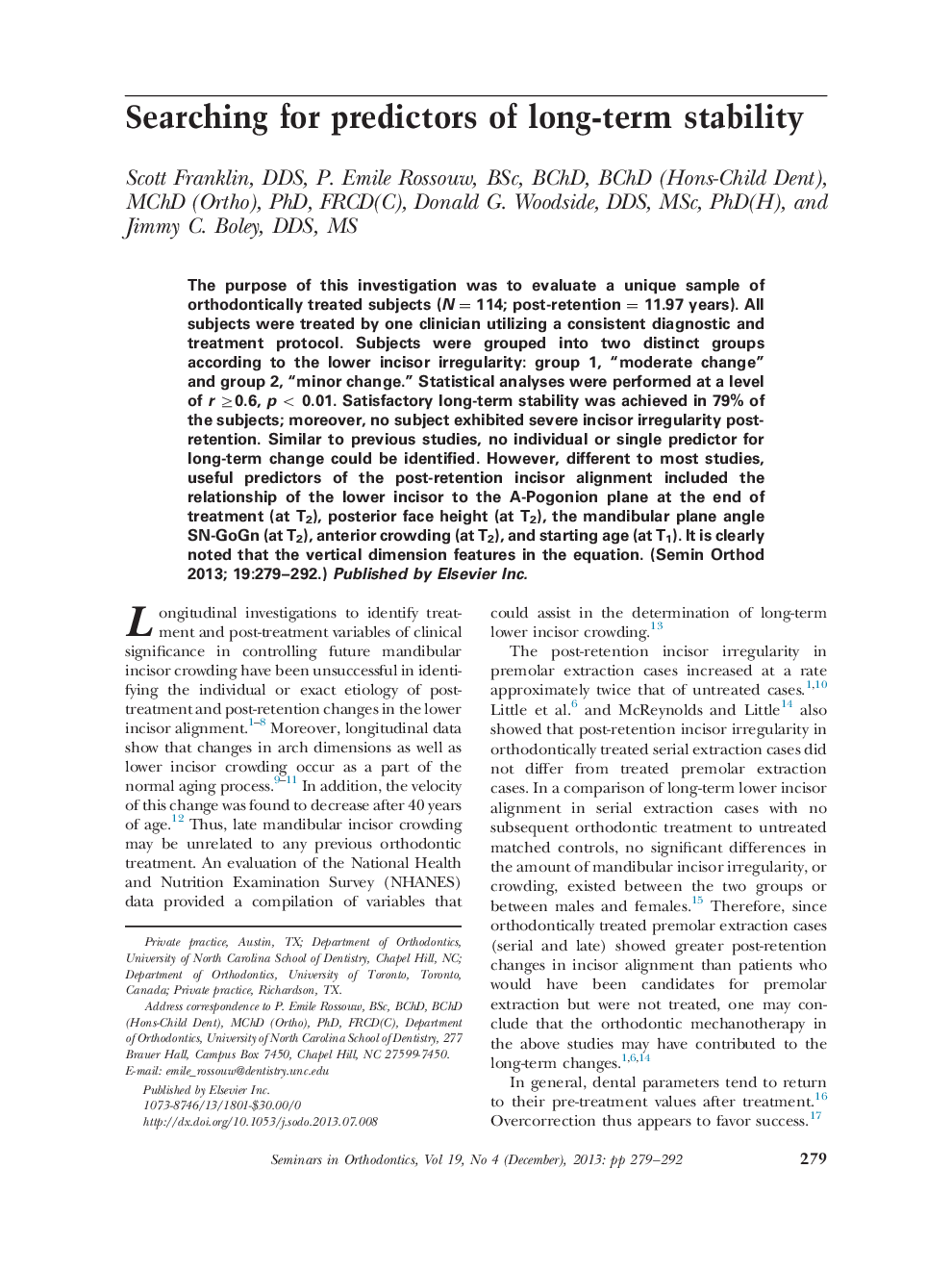| Article ID | Journal | Published Year | Pages | File Type |
|---|---|---|---|---|
| 3175454 | Seminars in Orthodontics | 2013 | 14 Pages |
Abstract
The purpose of this investigation was to evaluate a unique sample of orthodontically treated subjects (N = 114; post-retention = 11.97 years). All subjects were treated by one clinician utilizing a consistent diagnostic and treatment protocol. Subjects were grouped into two distinct groups according to the lower incisor irregularity: group 1, “moderate change” and group 2, “minor change.” Statistical analyses were performed at a level of r â¥0.6, p < 0.01. Satisfactory long-term stability was achieved in 79% of the subjects; moreover, no subject exhibited severe incisor irregularity post-retention. Similar to previous studies, no individual or single predictor for long-term change could be identified. However, different to most studies, useful predictors of the post-retention incisor alignment included the relationship of the lower incisor to the A-Pogonion plane at the end of treatment (at T2), posterior face height (at T2), the mandibular plane angle SN-GoGn (at T2), anterior crowding (at T2), and starting age (at T1). It is clearly noted that the vertical dimension features in the equation.
Related Topics
Health Sciences
Medicine and Dentistry
Dentistry, Oral Surgery and Medicine
Authors
Scott DDS, P. Emile BSc, BChD, BChD (Hons-Child Dent), MChD (Ortho), PhD, FRCD(C), Donald G. DDS, MSc, PhD(H), Jimmy C. DDS, MS,
